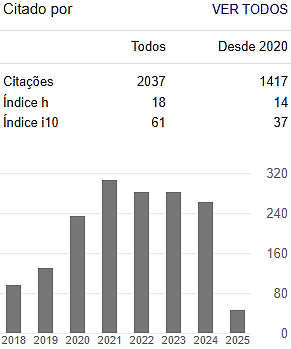WEED INTERFERENCE IN COWPEA (VIGNA UNGUICULATA) IN NORTHERN MINAS GERAIS, BRAZIL
Keywords:
competition; control; semi-arid; yieldAbstract
The degree of weed interference in an agricultural crop is influenced by edaphoclimatic characteristics, the management used in the environment and the period of coexistence between the weeds and the crop of interest. This study aimed to determine periods of weed interference in cowpea (Vigna unguiculata - Fabaceae) var. BRS Potengi in the semiarid of northern Minas Gerais, Brazil. Treatments consisted of periods of control and coexistence of cowpea with weeds under irrigated cultivation (0, 7, 14, 21, 28, 35, 42, 49, 56, 63, and 77 days after crop emergence). At the end of each period of coexistence and harvest time, weeds were quantified and identified, and dry matter was determined. Stem diameter, number of pods per plant, and grain yield were obtained for cowpea. The main weeds found were Cenchrus echinatus, Panicum maximum, Eleusine indica (Poaceae), and Amaranthus retroflexus (Amaranthaceae). The period before interference (PBI) occurred up to 9 days after emergence, the total period of interference prevention (TPIP) occurred up to 23 days after emergence, and critical period of interference prevention (CPIP) was observed between 9 and 23 days after emergence. Weed interference during the entire cowpea cycle reduced yield by 37% when compared to the control treatment.
Downloads
Downloads
Published
Issue
Section
License
Copyright (c) 2022 Colloquium Agrariae. ISSN: 1809-8215

This work is licensed under a Creative Commons Attribution-NonCommercial-NoDerivatives 4.0 International License.

